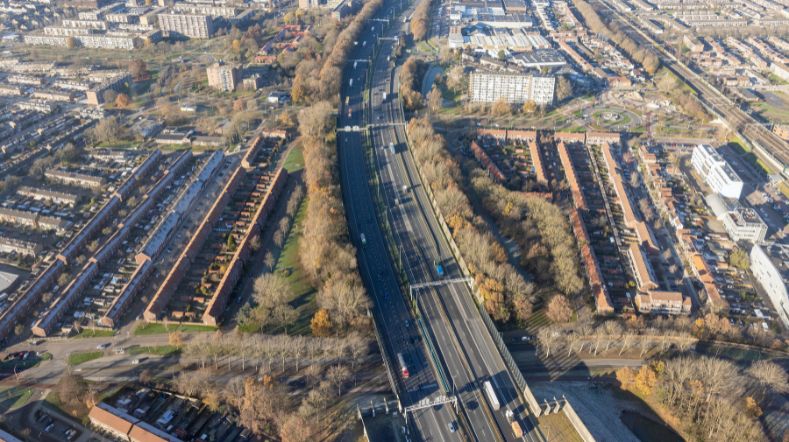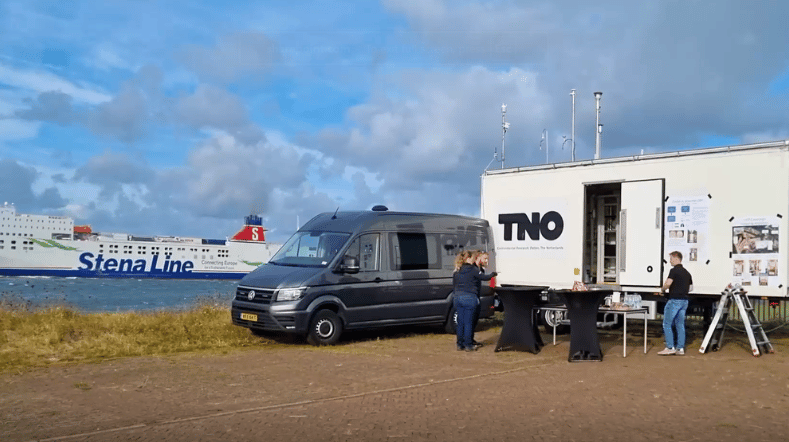
Monitoring particulate matter and other air pollution: Which sources contribute the most?
Air pollution, including particulate matter is bad for your health. It causes respiratory diseases, cardiovascular disorders and premature death. As a result, reliable data on the origins of air pollution is badly needed. The TNO web application TOPAS provides policymakers and other interested parties with up-to-date insights into the concentrations and origins of particulate matter in more than 200 European cities. The system is currently being extended to include also the main sources of nitrogen dioxide (NO2), ozone and methane.
TNO Operational Pollution Apportionment Service
See which sources are responsible for particulate matter in cities.
There is increasing scientific evidence of the harmful effects of air pollution on health, especially particulate matter. European directives require public authorities to analyse excesses and take measures where necessary. In order to be able to take targeted and effective measures, insights into the geographical and sectoral origin of air pollution including particulate matter are required.
Identifying the sources of air pollution
TOPAS (TNO Operational Source Apportionment Service) is based upon air quality modelling developed by TNO, as well as TNO’s knowledge of emissions and atmospheric models. This knowledge is combined with up-to-date weather information and European measurement data on air pollution. TNO has extensive experience in the field of air quality. We’ve been monitoring emissions for Dutch and European public authorities for 30 years. We make air quality predictions for the Netherlands and Europe as well as beyond (the United States, China and South America).
We also use our air pollution source apportionment tools for the Copernicus Atmosphere Monitoring Service. In this programme, we are working on behalf of ECMWF and together with our international partners (INERIS, MetNorway and NILU) to provide information to policymakers in order to identify the main sources of air pollution and support the development of mitigation strategies.
Helping public authorities to make choices
TOPAS gives policymakers much better insights than ever before into the sources of air pollution. On this basis, precautionary measures can then be taken. Certain sectors are particularly responsible for components of air pollution that are relatively harmful to health, such as black carbon.
The sectoral origin provided by TOPAS therefore also provides insights into the prioritisation of measures aimed at achieving maximum health gains. In this way, TNO offers public authorities assistance in making strategic policy choices in the field of air quality and health.
Particulate matter map
The result is a particulate matter map on which policymakers and other interested parties can see for each city which sources are responsible for particulate matter in the air. TOPAS offers free data for the last six weeks and is updated every 24 hours. The model is continuously being improved and is largely open source. Policymakers can request longer-term data from TNO.
4 inspiring air quality projects from the field.
This project intends to make the products developed under the Copernicus Atmospheric Monitoring Service (CAMS) useful for policy makers. This includes forecasts of European Air Quality, Green Scenarios and their impact on European air quality and exceedances, and source apportionment to pin-point the origin and reason for exceedances of air quality limit values in cities. TNO is providing operationally daily forecasts of country contributions to European cities with the LOTOS-EUROS model. TNO also contributes to episode reports which are produced upon request from the client (in case of exceedances) which present an analysis is made on the origin of the exceedances of the limit values.
In this Horizon 2020 project, we are collaborating in an international team to develop air quality services. In the context of the project we further developed our source apportionment tool so that it can also be used in other regions of the world. In addition to the TNO Operational Pollution Apportionment Service (TOPAS) that can be used globally, a prototype for a mitigation tool has been developed that allows policymakers to set certain emission reductions themselves to see how this would impact particulate matter concentrations. Prototypes have been put in place in Santiago de Chile and Colorado in the United States.
In this project the goal was to establish the impact of Polish emissions on particulate matter levels in eastern parts of Germany. Specific attention was given to the improvement of the modelling of episodic PM levels during winter time (2016-2017). LOTOS-EUROS is used to calculate source sector and source region contributions. Emission information for wood combustion is updated with latest scientific information. Finally, the modelled source apportionment is compared to source attribution based on observations (PMF) from 10 sites in eastern Germany.
In this project, we investigated the contribution of both domestic shipping and international sea shipping to air pollution in 19 European port cities.
Get inspired
Vacuuming the highway to reduce environmental microplastics from tyres


Making air healthier along busy roads


Measurement campaign in Rijnmond area to pinpoint emissions by shipping


Mapping out biodiversity thanks to particulate matter filters


TNO offers insight into air quality around airports



